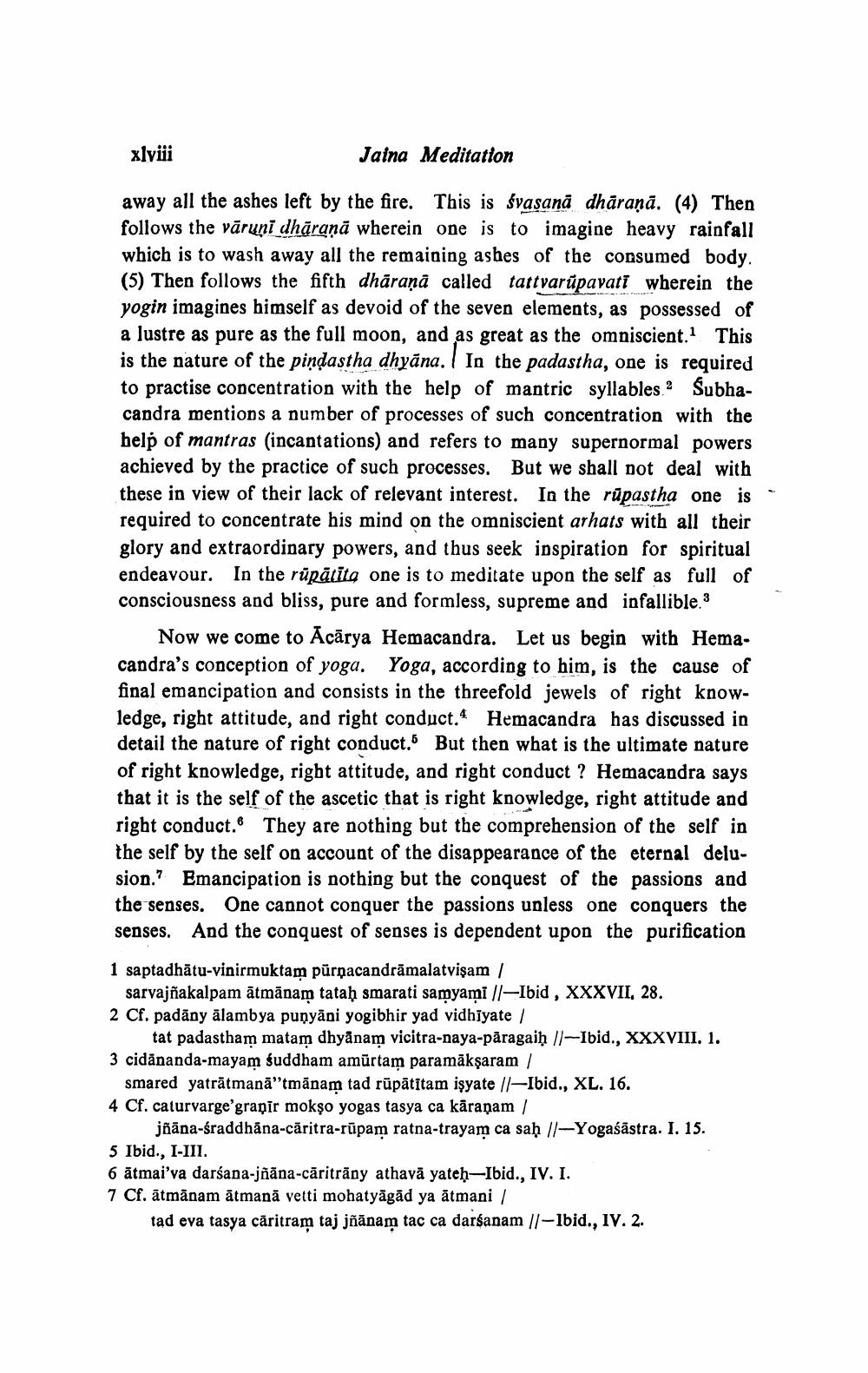________________ xlviii Jaina Meditation away all the ashes left by the fire. This is svasana dharana. (4) Then follows the varuni dharana wherein one is to imagine heavy rainfall which is to wash away all the remaining ashes of the consumed body. (5) Then follows the fifth dharana called tattvarupavati wherein the yogin imagines himself as devoid of the seven elements, as possessed of a lustre as pure as the full moon, and as great as the omniscient. This is the nature of the pindastha dhyana. / In the padastha, one is required to practise concentration with the help of mantric syllables. Subhacandra mentions a number of processes of such concentration with the help of mantras incantations) and refers to many supernormal powers achieved by the practice of such processes. But we shall not deal with these in view of their lack of relevant interest. In the rupastha one is required to concentrate his mind on the omniscient arhats with all their glory and extraordinary powers, and thus seek inspiration for spiritual endeavour. In the rupatita one is to meditate upon the self as full of consciousness and bliss, pure and formless, supreme and infallible.3 Now we come to Acarya Hemacandra. Let us begin with Hemacandra's conception of yoga. Yoga, according to him, is the cause of final emancipation and consists in the threefold jewels of right knowledge, right attitude, and right conduct.4 Hemacandra has discussed in detail the nature of right conduct. But then what is the ultimate nature of right knowledge, right attitude, and right conduct ? Hemacandra says that it is the self of the ascetic that is right knowledge, right attitude and right conduct. They are nothing but the comprehension of the self in the self by the self on account of the disappearance of the eternal delusion.? Emancipation is nothing but the conquest of the passions and the senses. One cannot conquer the passions unless one conquers the senses. And the conquest of senses is dependent upon the purification 1 saptadhatu-vinirmuktam purnacandramalatvisam / sarvajnakalpam atmanam tatah smarati samyamill-Ibid, XXXVII, 28. 2 Cf. padany alambya punyani yogibhir yad vidhiyate / tat padastham matam dhyanam vicitra-Daya-paragaih //-Ibid., XXXVIII. 1. 3 cidananda-mayam fuddham amurtam paramaksaram/ smared yatratmana"tmanam tad rupatitam isyate 1/-Ibid., XL. 16. 4 Cf. caturvarge'granir mokso yogas tasya ca karanam / jnana-sraddhana-caritra-rupam ratna-trayam ca sah 11-Yogasastra. I. 15. 5 Ibid., I-III. 6 atmai'va darsana-jnana-caritrany athava yateh-Ibid., IV. I. 7 Cf. atmanam atmana vetti mohatyagad ya atmani / tad eva tasya caritram taj jnanam tac ca darsanam //-Ibid., IV. 2.




